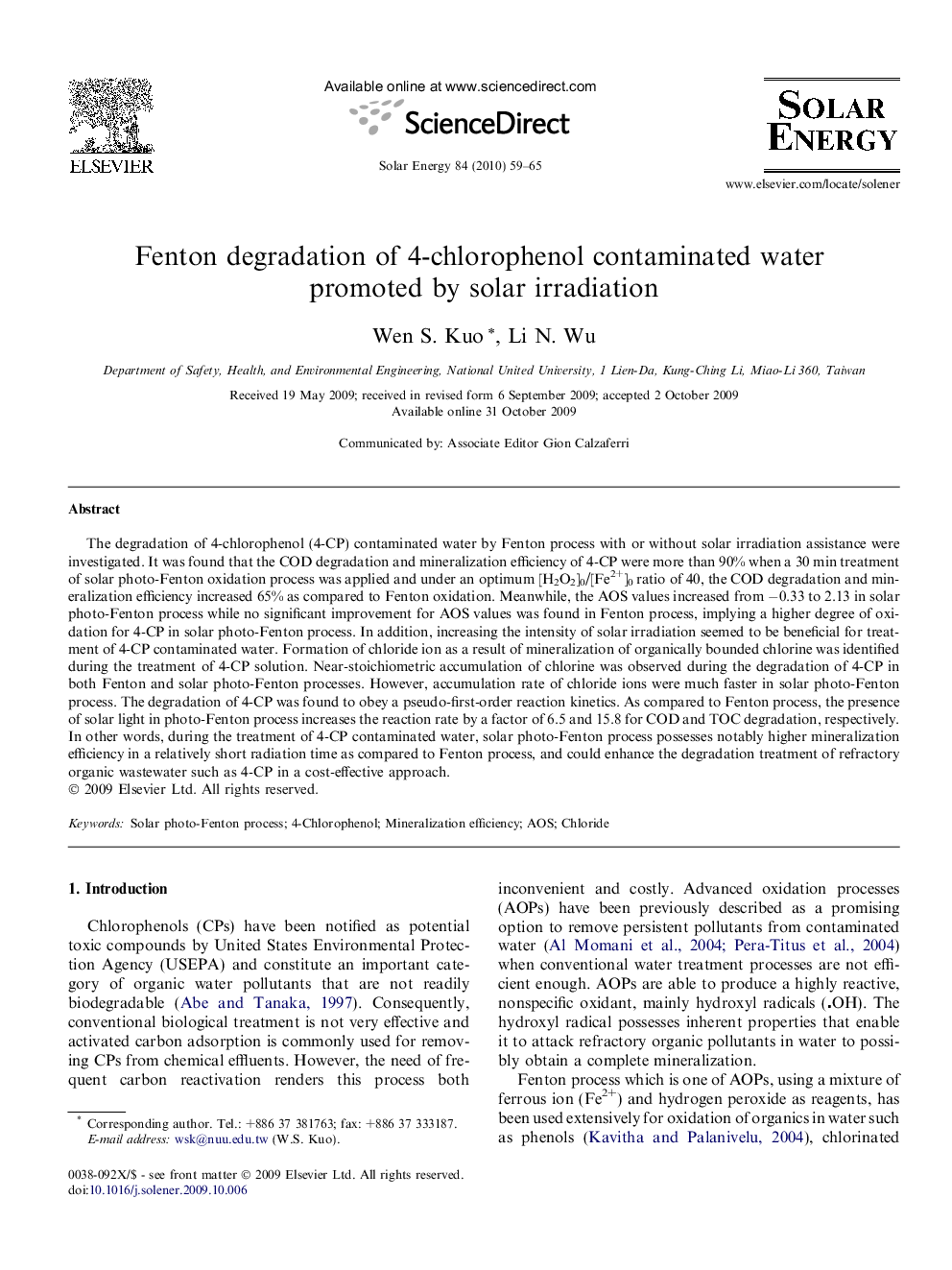| Article ID | Journal | Published Year | Pages | File Type |
|---|---|---|---|---|
| 1551405 | Solar Energy | 2010 | 7 Pages |
Abstract
The degradation of 4-chlorophenol (4-CP) contaminated water by Fenton process with or without solar irradiation assistance were investigated. It was found that the COD degradation and mineralization efficiency of 4-CP were more than 90% when a 30Â min treatment of solar photo-Fenton oxidation process was applied and under an optimum [H2O2]0/[Fe2+]0 ratio of 40, the COD degradation and mineralization efficiency increased 65% as compared to Fenton oxidation. Meanwhile, the AOS values increased from â0.33 to 2.13 in solar photo-Fenton process while no significant improvement for AOS values was found in Fenton process, implying a higher degree of oxidation for 4-CP in solar photo-Fenton process. In addition, increasing the intensity of solar irradiation seemed to be beneficial for treatment of 4-CP contaminated water. Formation of chloride ion as a result of mineralization of organically bounded chlorine was identified during the treatment of 4-CP solution. Near-stoichiometric accumulation of chlorine was observed during the degradation of 4-CP in both Fenton and solar photo-Fenton processes. However, accumulation rate of chloride ions were much faster in solar photo-Fenton process. The degradation of 4-CP was found to obey a pseudo-first-order reaction kinetics. As compared to Fenton process, the presence of solar light in photo-Fenton process increases the reaction rate by a factor of 6.5 and 15.8 for COD and TOC degradation, respectively. In other words, during the treatment of 4-CP contaminated water, solar photo-Fenton process possesses notably higher mineralization efficiency in a relatively short radiation time as compared to Fenton process, and could enhance the degradation treatment of refractory organic wastewater such as 4-CP in a cost-effective approach.
Related Topics
Physical Sciences and Engineering
Energy
Renewable Energy, Sustainability and the Environment
Authors
Wen S. Kuo, Li N. Wu,
